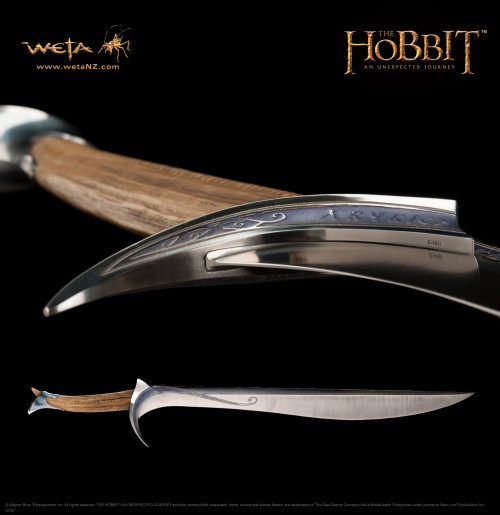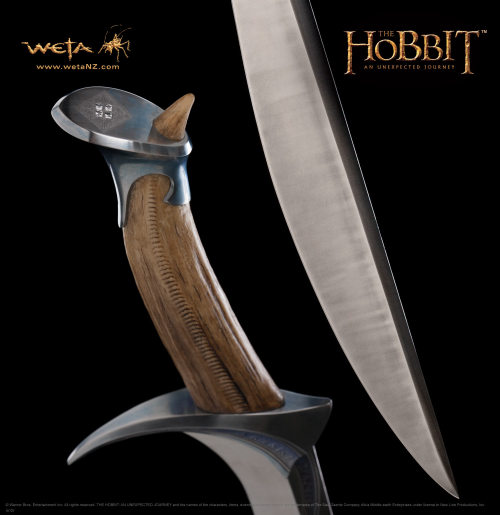art-of-swords: The Making Of Orcrist The most iconic prop in The Hobbit: An Unexpected Journey is ar
art-of-swords: The Making Of Orcrist The most iconic prop in The Hobbit: An Unexpected Journey is arguably Orcrist, “Biter”, “The Goblin Cleaver”. The sword found by Thorin Oakenshield in the hoard of the troll brothers William, Tom and Bert. Orcrist was launched recently as the fifth sword in Weta’s Master Swordsmith’s Collection and is available to order. The sword and some of its design history features in The Hobbit: An Unexpected Journey, Chronicles: Art and Design, but we wanted to delve deeper. We therefore looked up concept designer Paul Tobin and Master Swordsmith Peter Lyon for a chat about how the sword was designed and made. A commonly asked question on Facebook and various forums has been if the sword has been inspired by any particular type of sword. Paul Tobin explains: “In terms of a classification of weapon, it’s probably closest to a falchion. However, the main reason for the blade shape is the need for a strong visual weight as it needs to look impressive in the hands of a bulky and potentially scaled down dwarf. “If you take a sword like Glamdring, which is quite a slender blade, and while it looks fantastic in the hands of the tall slender wizard Gandalf, when you place it in the hands of a dwarf, it’s begins to look a bit like a rapier or large letter opener.” “Although some argue Orcrist is the brother of Glamdring, this doesn’t necessarily mean they have to look the same, only that they perhaps are made by the same smith. Tolkien never actually described any swords in any technical detail, so a lot of interpretation has to be done”, Peter Lyon adds. “So we started looking at Sting”, Paul continues. “There you have a wider blade and for the second round of designs, I drew heavily on that blade shape.” “We needed a heavy blade with a good on-screen presence and although Orcrist is a single-edged blade, there are lots of similarities, like the hand guard - very similar to Sting.” “Something there’s much discussion about online is the dragon’s tooth handle”, Peter interjects. “People are saying that there is no record in Tolkien’s work of a dragon being slain in earlier ages and therefore no way anyone could have a dragon’s tooth for a handle. But I guess you don’t actually have to kill a dragon to get hold of a tooth. Perhaps it was knocked out in battle and made its way to a smithy in Gondolin.” Read the rest of the article here Source: Weta NZ -- source link
Tumblr Blog : art-of-swords-deactivated201705.tumblr.com

